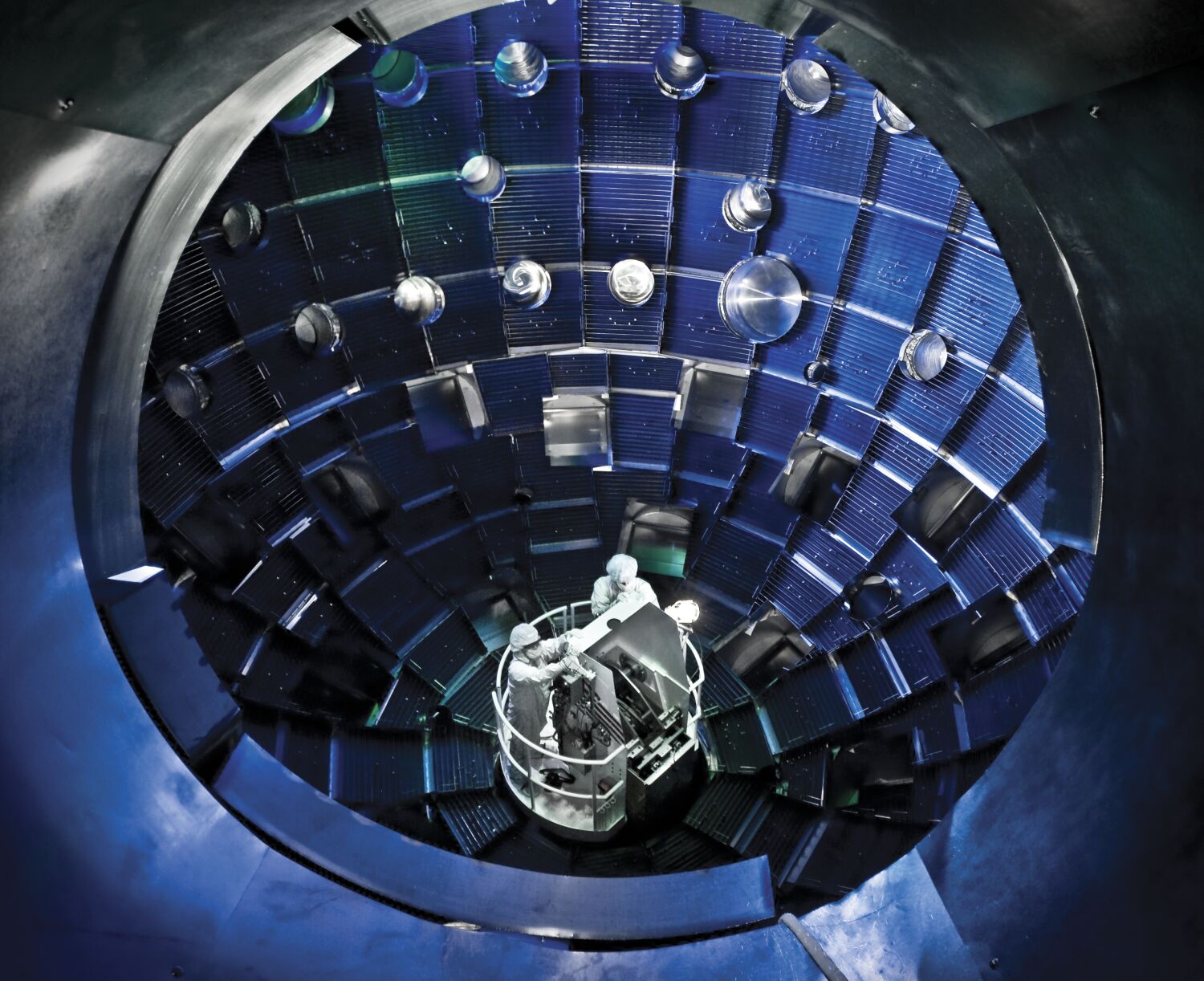Nuclear fusion breakthrough in California seen as milestone toward clean energy future


U.S. scientists have successfully created “net energy” through a nuclear fusion reaction, the U.S. Department of Energy announced Tuesday.
The historic experiment, which took place Dec. 5 at Lawrence Livermore National Laboratory, is the most significant step yet taken in the decades-long quest to produce cheap, clean, carbon-free energy through nuclear fusion.
“We have taken the first tentative steps towards a clean energy source that could revolutionize the world,” said Jill Hruby, administrator of the National Nuclear Security Administration.
In nuclear fusion, two atoms traveling at high speeds slam together and merge into a larger atom, releasing energy. It’s the process through which the sun makes energy. The sun’s core is the ideal high-pressure, high-temperature environment for atoms to fuse; replicating those conditions here on Earth has proved much more difficult.
Newsletter
Stay tuned for more Repowering the West
Get our Boiling Point newsletter for the next installment in this series — and behind-the-scenes stories.
You may occasionally receive promotional content from the Los Angeles Times.
Scientists at Lawrence Livermore in the San Francisco Bay Area achieved their breakthrough by training 192 lasers at a target roughly the size of a peppercorn, heating it to more than 3 million degrees Celsius (more than 5.4 million degrees Fahrenheit) and — briefly — mimicking the conditions of a star. Fusion began.
“This had all happened before. One hundred times before,” said Marvin Adams, the nuclear security agency’s deputy administrator for defense programs. “But last week, for the first time, they designed this experiment so that the fusion fuel stayed hot enough, dense enough and round enough for long enough that it ignited and produced more energy than the lasers had deposited.”
That net energy gain was “about two megajoules in, about three megajoules out,” Adams said.
A fusion reaction generates three to four times as much energy as fission, which itself is already roughly a million times more powerful than any other energy source on Earth.
Nuclear fission, or the splitting of atoms, also releases a massive amount of energy. Fission reactions have been channeled productively into nuclear power plants and destructively into nuclear weapons.
Unlike fission, nuclear fusion does not release harmful radioactive byproducts that take thousands of years to decay.
For those reasons, a controllable fusion-based energy technology has been one of science’s most sought-after goals since the 1950s. Despite billions in government and private investment, no one has been able to produce a nuclear fusion reaction that didn’t consume more energy than it created.
Fusion has long been seen as key to the goal of achieving net-zero emissions. Electricity and heat production currently account for 30% of global greenhouse gas emissions. A technology that successfully harnesses nuclear fusion could, in theory, create endlessly renewable amounts of clean, carbon-free energy.
While Tuesday’s announcement is a major step toward that ideal, there’s still a long road ahead. Any commercial application of the technology is likely at least a decade away.
Riccardo Betti, a professor at the University of Rochester and expert in laser fusion, said there’s a long road ahead before the result generates sustainable electricity.
He likened the breakthrough to when humans first learned that refining oil into gasoline and igniting it could produce an explosion.
“You still don’t have the engine and you still don’t have the tires,” Betti said. “You can’t say that you have a car.”
The Associated Press contributed to this report.
Share this news on your Fb,Twitter and Whatsapp
Times News Network:Latest News Headlines
Times News Network||Health||New York||USA News||Technology||World News